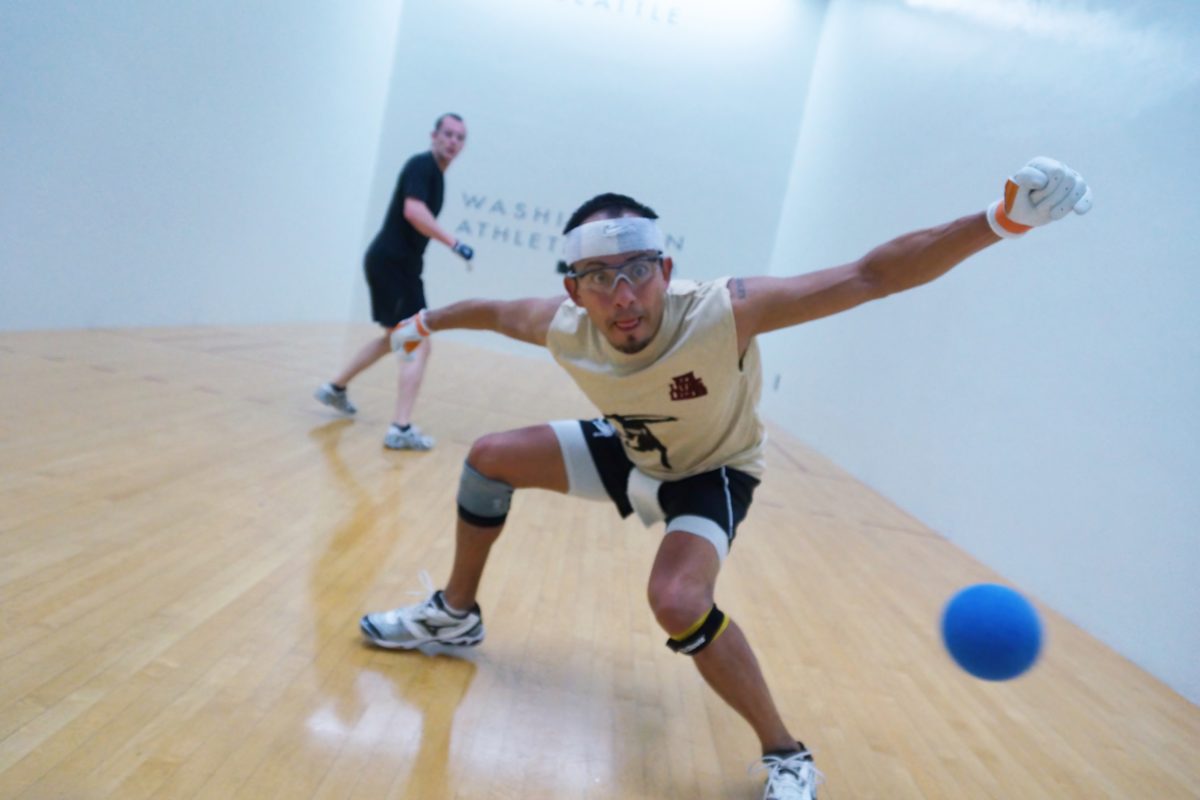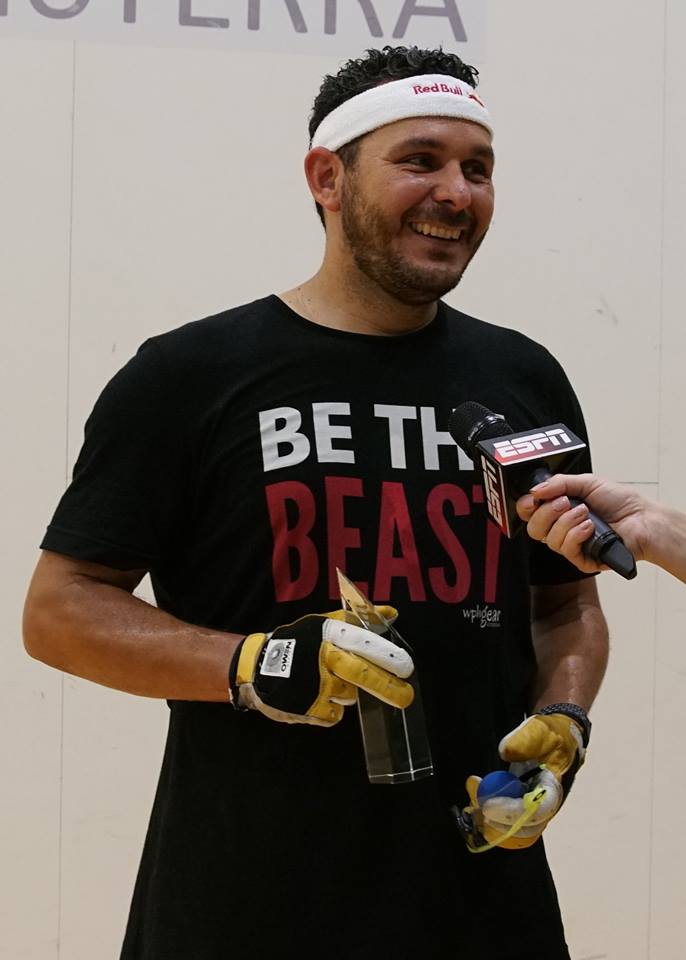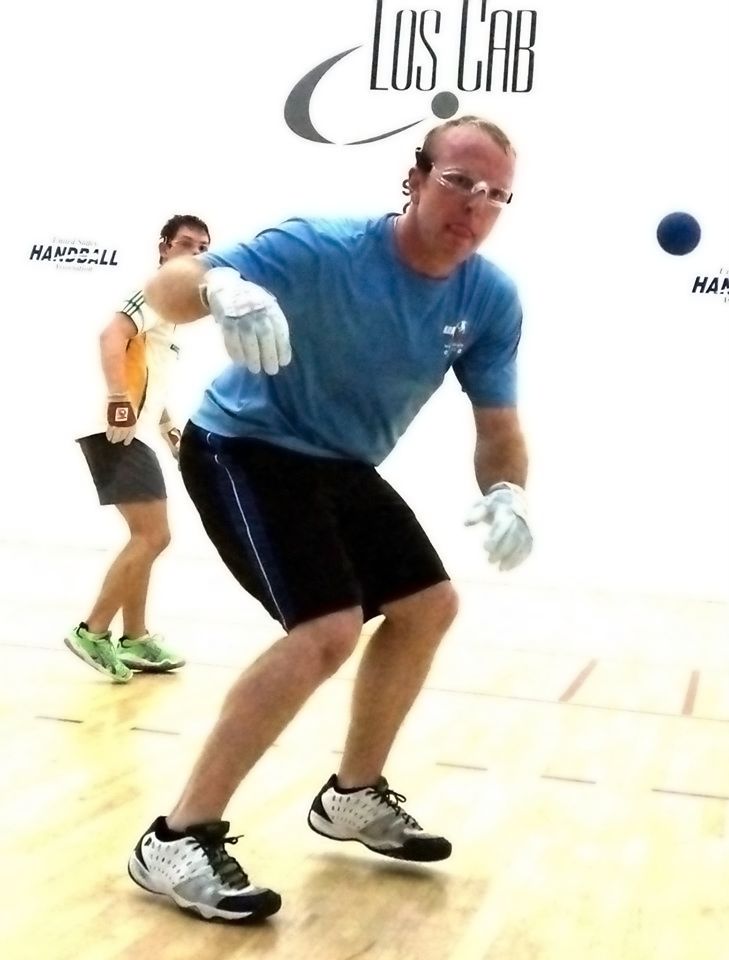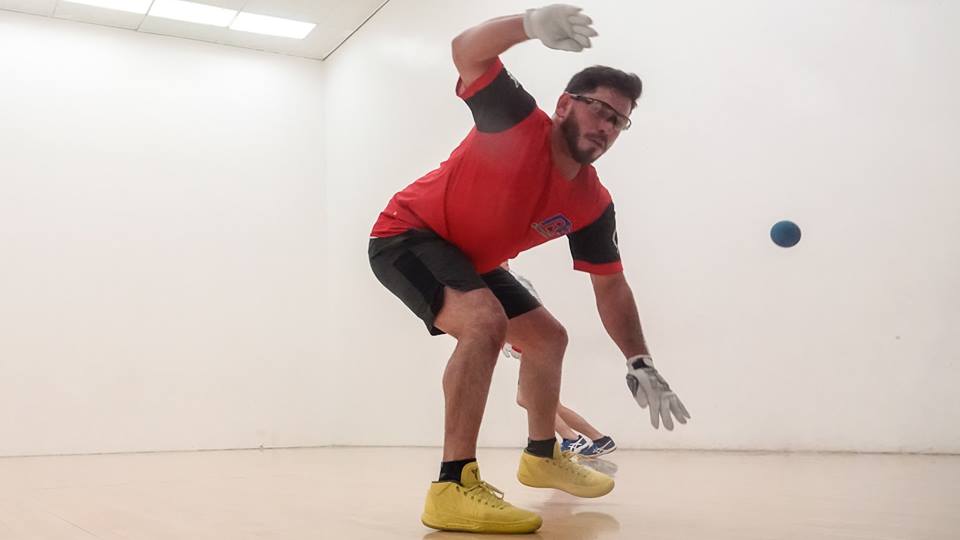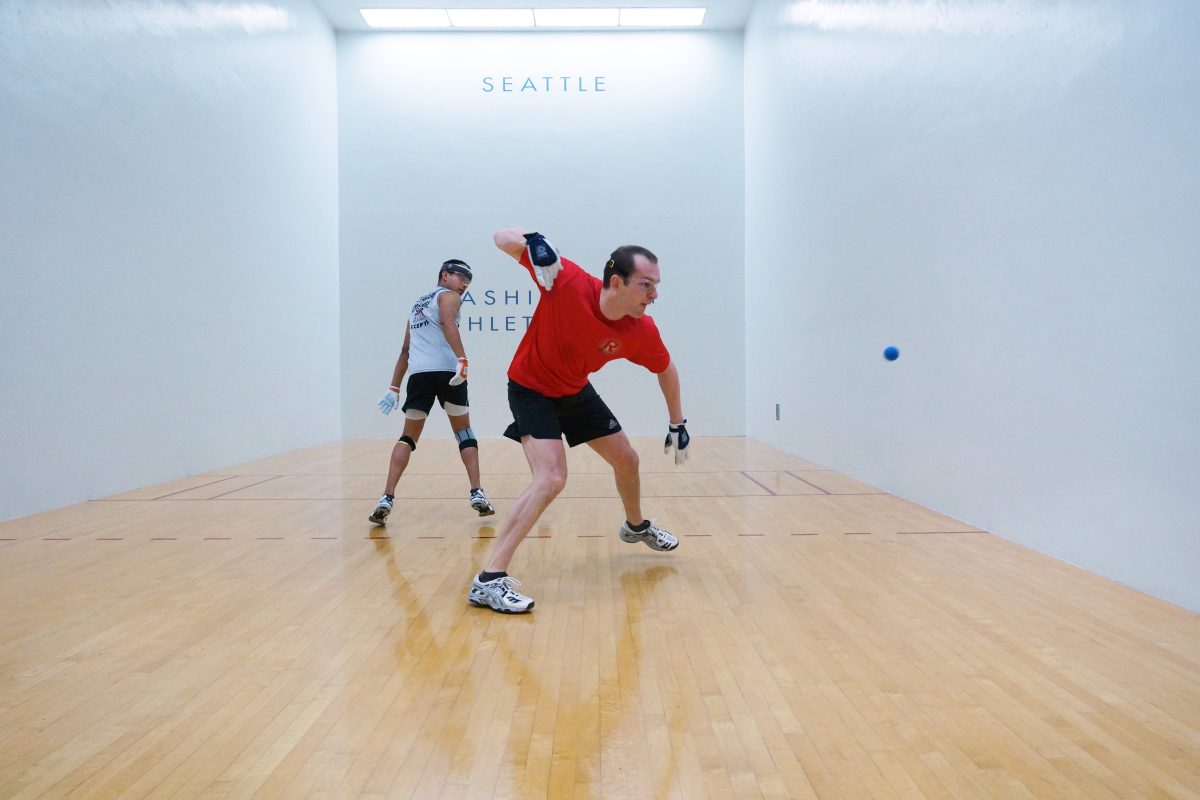Hardest shot to Learn
WPH Press, Tucson, AZ, 1/23/23
The WPH is thrilled to bring you the Race 4 Eight Legends Corner, your chance to learn from the Race 4 Eight’s legends that have shaped the most exciting handball tour in the sport.
On Edition 1 of the Race 4 Eight Legends Corner, our legends will discuss the hardest shots for them to learn. While the greats make all of the shots look easy, even they struggled to master certain shots. We’ll see how the legends identified their most difficult shots and addressed those shots to turn a weakness into a strength.
4-time R48 Finalist, Former R48 #2 Naty Alvarado, Jr.
I felt like the hardest shot for me to learn was more of a return of service that David Chapman started to bring into competitive play in the late 90s to early 2000s.
It was the high 3-wall banking serve that rammed/pinched itself into the left wall after screaming off the back wall with a downward spin that made the ball difficult to predict on its release point.
If you returned one, David would alter the speed or the angle to change the outcome of the fourth wall touch.
The problem with the server is that practicing the service return by yourself would give me dizzy spells. It was a crazy drill that I had to get used to.
Eventually, I learned that I needed to mirror the travel of the ball from the beginning of the serve to the end of the serve so that my body was in a mirrored motion of the ball’s flight. After losing a few matches to David Chapman on just poor service returns and with hours of practice, I gained the confidence to let the ball do its thing around the court and allow the ball to turn into a back wall set up.
It wasn’t easy, but neither was practicing the return at home
10-time SR48 champion, Former SR48 #1 and Former R48 Elite 8 Marcos Chavez
The hardest shot for me was the ceiling shot – not so much hitting it up to the ceiling but controlling the ceiling shot so it didn’t hit the back wall and set up the great qualifiers/pros. It was learning that I had to adjust to the much better players on tour than the players at my home courts.
(To practice) What I would do was play players and basically play a game twice as long because I would (hit to the) ceiling everything while practicing.
I would watch the pros like Chapman, of course, and Tyler Hamel – those guys would frustrate players so much because they had great control to the ceiling. I wanted to learn that part of the game since my coach Vince Munoz was all offense.
1-time R48 champion, Former R48 #2 Allan “The Blonde Bombshell” Garner
I felt like the hardest shot for me to learn was the power serve. It didn’t come natural to me, and I never sought advice on improving my serve until I got a lesson from (Chip) “Baby” Morales. He made a few tweaks and I was able to turn it from a liability into an asset
2-time R48 champion, Former R48 #1 Mando Ortiz
The hardest shot I believe I learned is when an opponent hit a ceiling shot to the left back wall and shooting it straight to the left. I remember sitting watching Paul Brady vs. Tony Healy at Worlds in Edmonton, Canada and Paul hit a flat roll out with his left coming off the ceiling and real low. I was in awe, I told myself I need to learn it.
Learning that shot was really frustrating at first, I always jammed myself or pulled away from the ball. Every time I pulled away, I shot into the center or the right side of the court. I realized I had to keep away from my body, let the ball drop to my ankles and use my legs to drive it.
2-time R48 finalist, Former R48 #2 Emmett “The Rock” Peixoto
Honestly, all shots are hard, every one of them. Kill shots can be easy, if say, you are able to get low, push forward and level with your whole body, follow through, etc., but if playing somebody that disallows that possibility for the most part, then even when presented with an opportunity to execute a kill the pressure to execute is ever more acute. This is why my game has always placed the emphasis on defensive play. Pushing people back, slowing the game down, wrapping the ball, passing, all of which are difficult to execute as well, but at least enable more offensive opportunities to present themselves overall. When presented with more offensive opportunities, there is less pressure to execute each one, leading to more well-executed kill shots, which leads to less pressure, and so on, in a positive feedback loop. All in all, one must practice every shot, not simply in practice, but in tournament play, as often as possible for any shot in particular (given the context) to become anything other than hard.
2-time R48 Champion and Former R48 #1 Charly Shanks
Playing an attacking shot with left hand off back wall, whether it be a kill or pass (esp v pass of deep side wall). Tricky shot let alone it being off hand but also developing the footwork is challenging…
Do you have a question for the legends? Email me at David.fink@wphlive.tv
Stay tuned for more Race 4 Eight Legends Corner throughout 2023
David Fink
WPH Senior Writer










